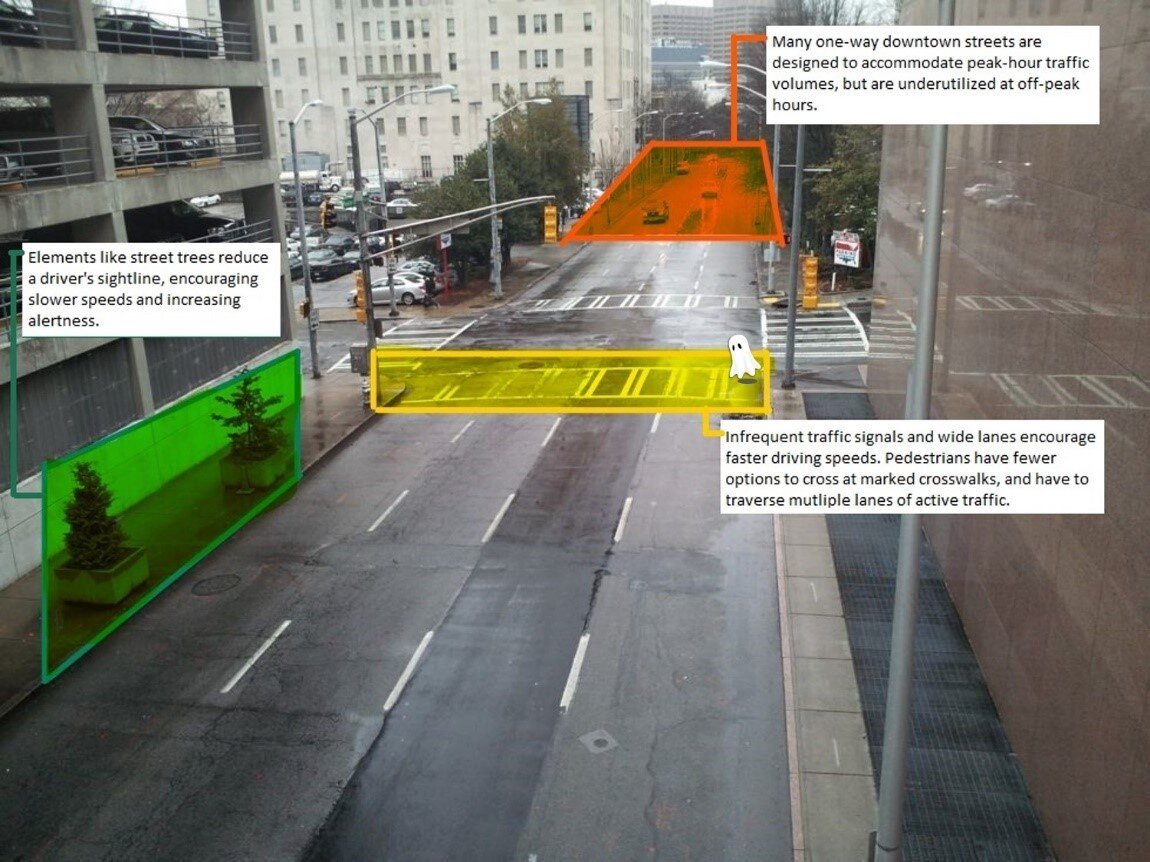Skeletons, ghosts, and other things that go bump in the night; the month of October is full of scenes that call back to childhood fears and superstitions. Staff at GOPC are afraid of conventional things, like clowns and chainsaw killers, but few things keep the office up at night more than poorly designed streets.
As GOPC has mentioned before, roadways are more dangerous now than ever before for pedestrians and cyclists. In 2018, 131 pedestrians and 22 cyclists were killed across Ohio, and the state ranked as the 26th most dangerous for people walking in a 2019 study by Smart Growth America. With Halloween on the horizon, it’s important to note that on average, children are more than twice as likely to be hit by a car and killed on Halloween than on any other day of the year.
Source: Ohio State Highway Patrol
Roadway design is one of many factors that contribute to street safety, including the availability of sidewalks, lighting, and permissible vehicle speeds. Speed plays a critical role in the severity of crashes, and organizations like the National Association of City Transportation Officials note that as a driver’s speed increases, their peripheral vision narrows severely, increasing the likelihood of a crash (see a cool visual on the degree of sight loss here). Several design elements can be utilized to bring the operating speed into line with designated design speeds (which are different from posted speeds).
Too many streets are designed to either optimize operating speed or reduce driver risk. Both of these design choices can increase vehicle speeds while reducing pedestrian and cyclist safety. Urban streets are meant to invite users on a variety of modes, and encouraging pedestrians to interact with commercial and residential centers is a proven strategy to revitalize downtowns. Yet, promoting walkability along poorly designed roadways, or clustering stores and residences along busy streets, places all users in dangerous situations.
Safe roads protect all roadway users, including drivers. A uniform, statewide active transportation policy would go a long way towards reducing pedestrian fatalities and injuries. Adoption of a statewide active transportation policy has been and remains a priority for GOPC. For staff, nothing is scarier than dangerously designed street.
Examples of Spooky Street Designs the pose dangers to pedestrians, cyclists, transit users, and drivers alike.






